Approach
An existing urban water management plan and competing adaptive management strategies are evaluated against climate change and planning uncertainties with a robust decision making (RDM) approach.
A set of workshops is used to first design a WEAP (Water Evaluation and Planning System) simulation model, and then raise decision makers awareness about the significance of climate change risks for the actual plan relative to other alternatives and evaluate means to reduce vulnerabilities.
Within the RDM approach, scenario discovery is applied using the PRIM algorithm to identify policy relevant scenarios, that is conditions for which the plans are the most vulnerable to climate and planning uncertainties. Robustness is also evaluated in terms of number of cases in which failure occurs, a form of robustness metric closely related to "Starr's domain criterion".
The study also considers adaptive strategies based on the consideration of near term and long term actions. It assesses the implications of acting immediately and of delaying the implementation of actions for different future time points over the plan duration (predict-then-act vs wait-then-act management strategies). The approach enabled decision makers to identify conditions for considering different management options over time, according to how the future may unfold, and limit the risks of over- or under-estimating the costs for different management actions.
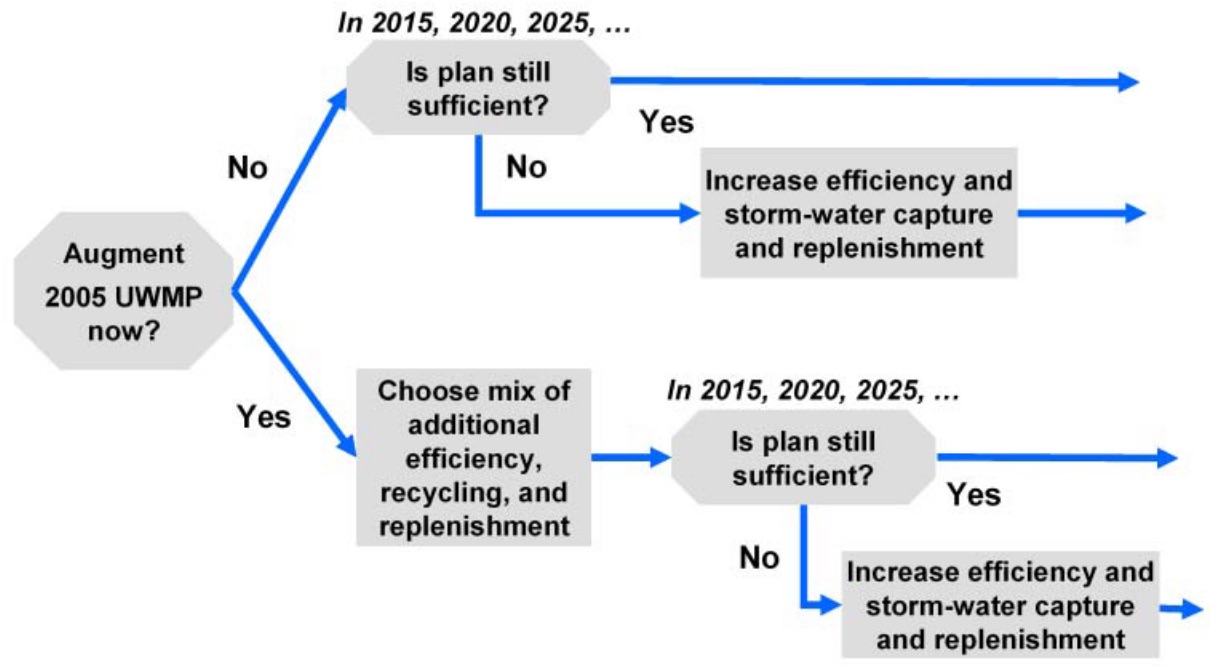
Case study details
In the context of a research study about climate change decision making under uncertainty, RAND researchers worked in collaboration with Southern California's urban water management agency, the Inland Empire Utilities Agency (IEUA), to evaluate the vulnerability of the 2005 Regional Urban Water Management Plan (UWMP) and nine adaptive management strategies against climate change and planning uncertainties.
The analysis is centered on the use of the WEAP model to evaluate the performance of the plans under future scenarios. The model simulated the supply and the demand on a monthly time scale from 2005 to 2040. The model was calibrated and validated against historical temperature and precipitation trends (1980-2003) and management actions described in the UWMP with regional projections of the average water demand and water supply.
Four workshops were organised, the first three designing the simulation model to evaluate the IEUA's water management plans over a wide range of futures, and the fourth raising decision maker awareness about the significance of climate change risks for the actual plan relative to other alternatives and evaluating means to reduce the UWMP vulnerabilities to multiple plausible futures.
The project aimed to build decision makers' capacity to plan in the long-term and adapt to changing conditions.
The UWMP was designed based on a standard probability analysis approach to identify the best management option in terms of reliability (i.e., chance of a water shortage under 7% over the next 25 years). The RDM approach identified two major vulnerable conditions for the plans:
- a Dry, flashy, low water recycling scenario: the current plan fails to prevent water shortages and imposes significant socioeconomic costs to water users.
- a Wet, effective water recycling scenario: the plan generates more water supply than needed, indicative of overinvestment in supply enhancements and higher costs than necessary to water users.
When considering the urban management problem and conditions in the Chino Groundwater Basin (South California, USA), increased temperatures in the basin associated to reduces or increasing precipitations are expected to:
- increase the demand for irrigation
- generate more intense and, potentially, frequent storms
- reduce the Sierra snow pack on which the region relies for its imports of water
- reduce local water supplies for groundwater recharge
Other uncertainties in the basin include:
- legal decisions and catastrophic events (e.g., earthquake) that may affect the reliability of the supplies imported from the State Water Project (SWP) via the Metropolitan Water District of Southern California
- ability to sustain future water demands in terms of water users or activities and associated water requirements. This ability implies being able to manage emerging socioeconomic events such as financial crisis and provide timely infrastructural improvements to manage the expected rapid urbanisation.
- ability of the IEUA to develop effective actions in terms of financial resources for implementing actions, coordinate actions among management bodies, and gain public support.
The existing UWMP aimed to address water demands relying largely on conjunctive use of ground and surface water resources and recycled water, including use of stormwater and recycled water for managed aquifer recharge. Demand management options considered include water efficient irrigation technologies and practices or incentives for implementing water saving technologies in existing houses and businesses.
Nine management plans are evaluated by WEAP (see figure below). Updates refer to adaptive strategies i.e. strategies implemented based on the consideration of near-term (to implement now) and alternative (to implement based on how future conditions may evolve) actions.
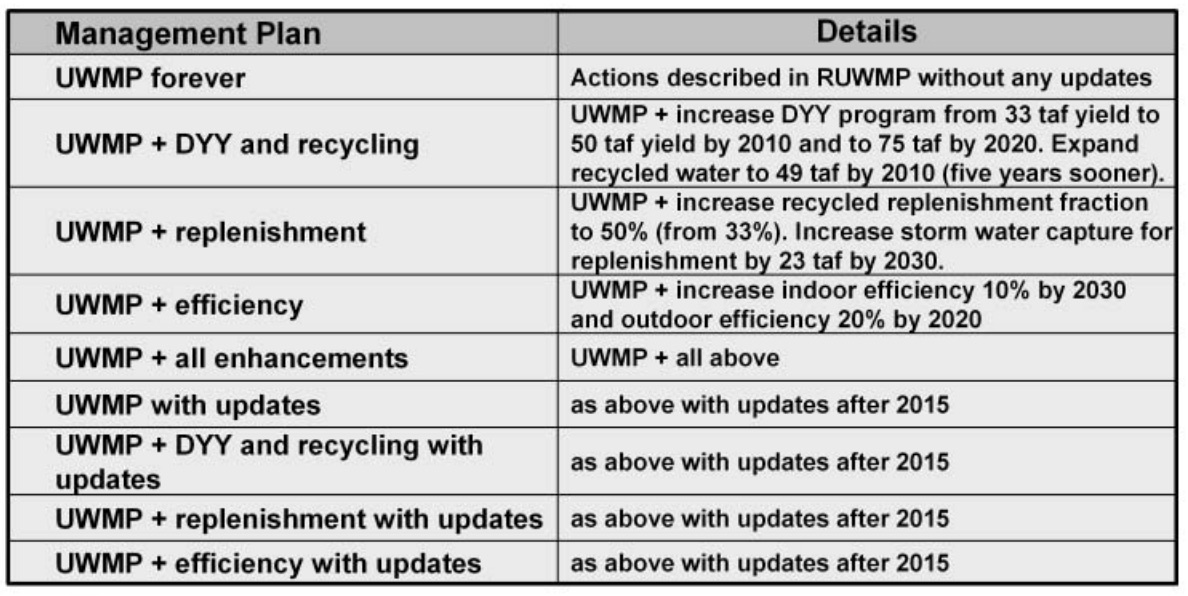
Eight uncertainties (assumptions) were evaluated for each management strategy using WEAP (see figure below). WEAP evaluated different combinations of assumptions and their consequences for plan performance. A total of 200 simulations were generated on that basis.
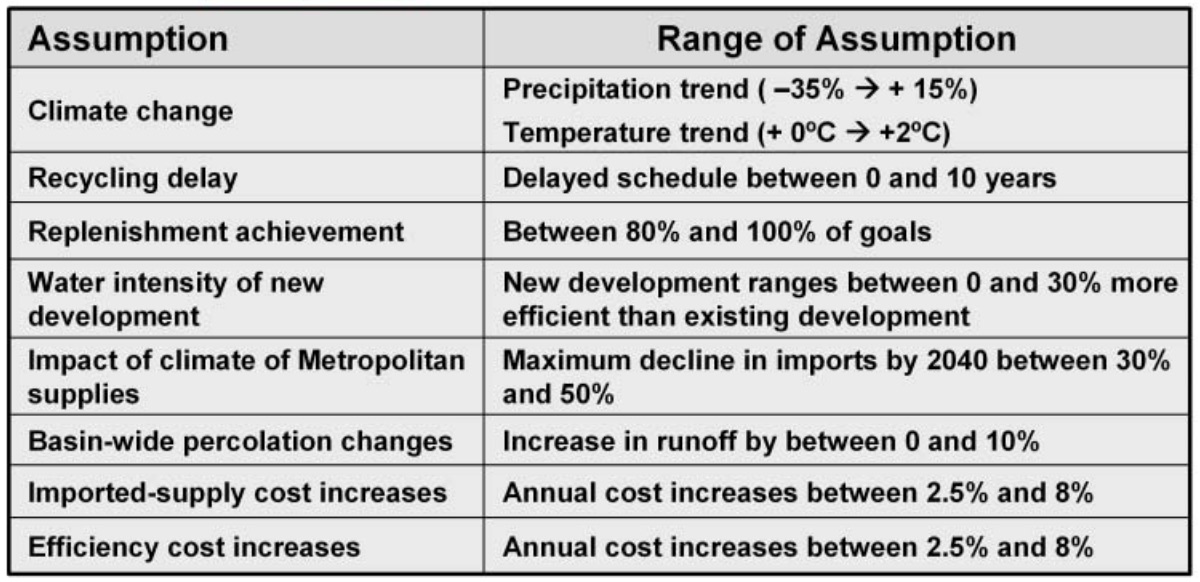
Performance criteria estimated by WEAP for the 2005-2040 period consist of:
- water demands
- supply availability
- financial effects water shortage
- costs of provisioning supply
The results from the different simulations are then aggregated and presented as scatter plots (figure below) comparing the PV costs of shortage against the PV supply costs to compare the effectiveness of different actions against the UWMP alone and when considering or not adaptive actions (i.e., near term and long-term actions). Threshold values are set for costs, delineating boundaries and helping decision makers visualise the effects of different actions on reducing costs. Residual risks are visualised in the form of costs evaluated in vulnerable scenarios, prompting consideration of contingency actions.
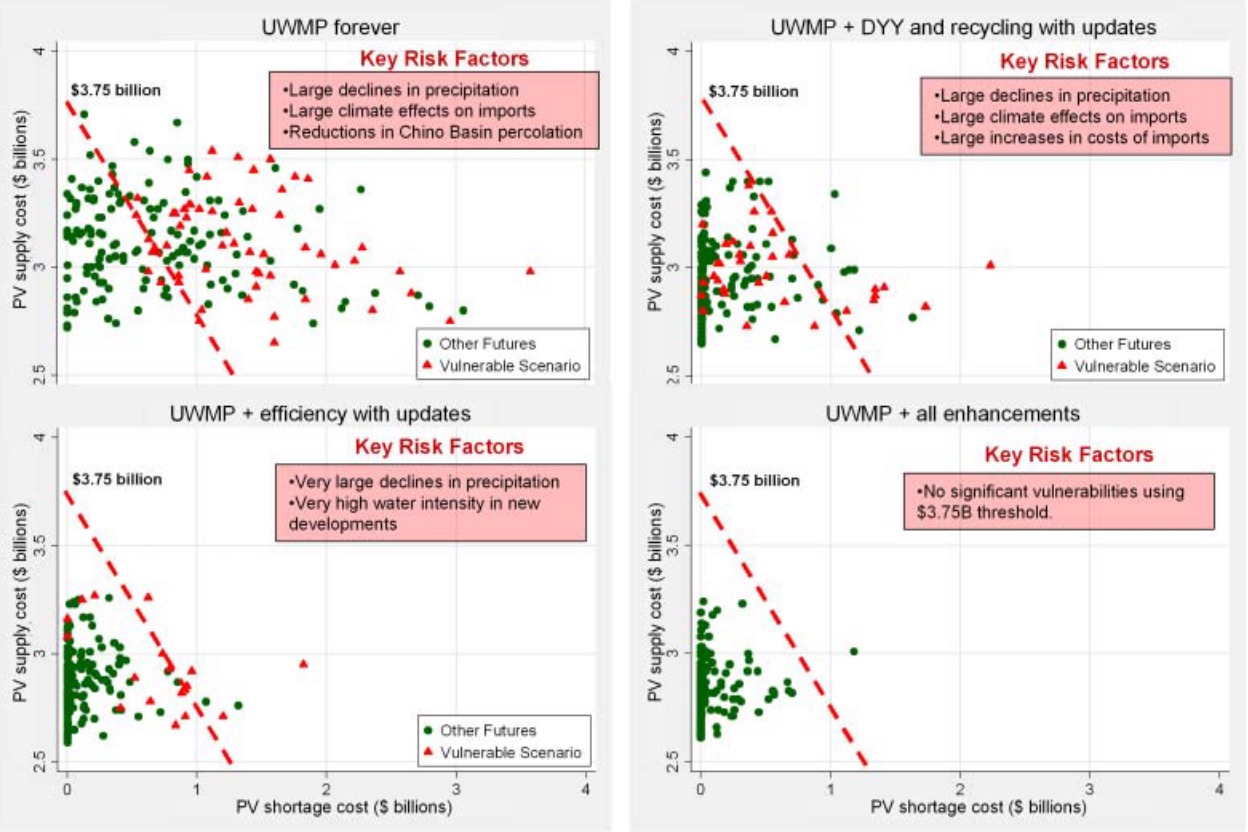
Robustness of different management strategies is also compared in the form of histograms displaying the number of cases for which each plan fails to achieve acceptable PV total costs outcomes.
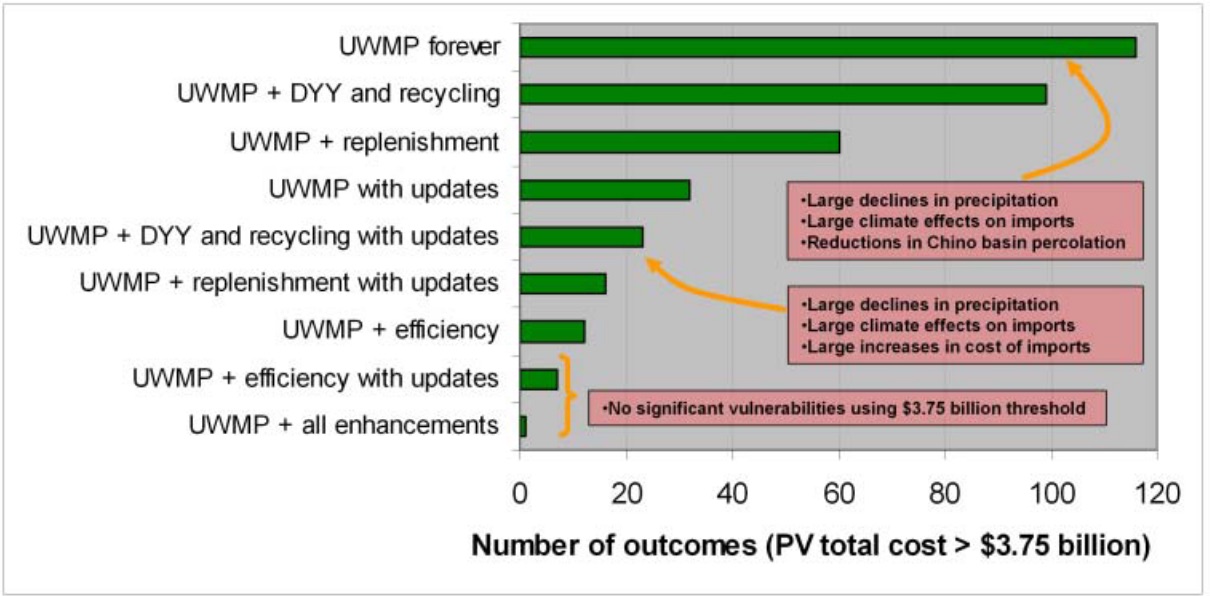
Reference
Also see urban water resource planning for additional examples.
